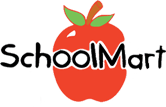The Hybrid Classroom: Strategies for Blended Learning Success
In today’s evolving education landscape, the hybrid classroom is no longer just a temporary solution, it’s the future. By blending in-person instruction with digital tools, educational institutions can meet the many needs of their students and create a more flexible learning environment. Whether you’re an experienced educator or new to blended learning, having the right strategies and tools can make a big difference.
Let’s explore what blended learning is, the best tools for hybrid education, and how to implement smart EdTech strategies that support student success.
What is Blended Learning and Why is It Important?
Let’s start with the basics of what this approach looks like in real classrooms.
Blended learning, sometimes called hybrid education, combines face-to-face teaching with online educational activities. Rather than relying solely on lectures or homework, this model integrates digital learning tools into daily classroom routines.
This approach gives students more control over how and when they learn. They can review content at their own pace, access resources on demand, and collaborate online, all while still benefiting from in-person interaction with teachers and peers.
Blended learning is especially effective for supporting different learning styles. Visual learners can benefit from videos and graphics, while hands-on learners can interact with simulations or educational games. The hybrid classroom also allows teachers to differentiate instruction more easily and support students who need extra help or more advanced material.
The shift toward digital learning gained momentum during the COVID-19 pandemic, when many educational institutions had to quickly adopt hybrid and online educational models. Now, blended learning offers a more structured, long-term solution for flexible instruction.
According to Anthology, blended learning improves engagement and empowers students to take more ownership of their education. It also helps prepare them for the digital skills they’ll need in college and future careers.
Best Tools for Teaching in a Hybrid Classroom
The right tools are essential to create a successful blended learning environment.
- Learning Management Systems (LMS)
Platforms like Google Classroom, Schoology, or Canvas allow teachers to share resources, assign work, give feedback, and communicate with students, all in one place. These tools streamline online and offline teaching by creating a consistent workflow. - Interactive Content Tools
Sites like Nearpod, Pear Deck, and Edpuzzle let teachers create interactive lessons and videos that keep students engaged, whether they’re at home or in class. These platforms allow real-time feedback and promote active participation. - Video Conferencing and Collaboration Tools
Zoom and Microsoft Teams are still essential for remote learning sessions, group work, and parent communication. Combined with collaboration tools like Padlet or Jamboard, they encourage creativity and peer interaction in hybrid classrooms. - Digital Assessment Tools
Formative tools like Kahoot, Quizizz, and Socrative make assessments more engaging and provide immediate insights. These platforms help teachers monitor progress and adjust instruction in real time. - Classroom Tech Devices
Don’t forget the hardware. Interactive whiteboards, document cameras, and student devices like tablets or Chromebooks are foundational for supporting hybrid education. These tools enable seamless transitions between online and offline teaching.
When used together, these tools enhance both the structure and delivery of hybrid instruction, making teaching in hybrid classrooms more effective and sustainable long-term.
Effective Strategies for Blended Learning Success
Here’s how to turn tools into real classroom success with simple, effective strategies.
Having the right tech is only half the battle. Blended learning success comes from how you use those tools in your teaching approach. Here are some essential strategies:
Start with Clear Routines
Consistency is key in a hybrid classroom. Set clear expectations about how students should engage both in person and online. Use your LMS to post schedules, deadlines, and materials regularly.
Blend Synchronous and Asynchronous Learning
A good hybrid classroom model includes both real-time instruction, like live discussions or group work, and self-paced learning, such as videos or digital assignments. This balance gives students flexibility while keeping them accountable.
Personalize Instruction When Possible
Use data from your digital learning tools to identify which students need more support or are ready to move ahead. Assign different activities or levels based on students’ needs to create more personalized learning experiences.
Encourage Collaboration
Just because students are in different locations doesn’t mean they have to learn alone. Use discussion boards, shared docs, or breakout rooms to promote collaboration. Peer interaction is critical in both online and offline teaching.
Reflect and Adjust Often
Hybrid education takes practice and flexibility. Collect feedback from students, review analytics from your EdTech strategies, and make adjustments as needed. What works for one group might not work for the next.
As you refine your approach, blended learning becomes a natural extension of your classroom, not just an add-on.
Bring Blended Learning to Life with SchoolMart
Blended learning is even easier to implement when you’ve got the right support system.
Blended learning is more than a trend, it’s a powerful way to create inclusive, engaging, and flexible learning environments. With the right digital learning tools and EdTech strategies, you can transform your hybrid classroom into a thriving environment for every student.
At SchoolMart, we’re here to support educators with high-quality classroom tech, flexible learning tools, and expert guidance. Whether you’re building your hybrid setup from scratch or looking to level up your current resources, we’ve got what you need.
Ready to bring blended learning to life? Explore SchoolMart’s curated collection of hybrid classroom tools and teaching resources designed to help you succeed in both online and offline teaching environments.
